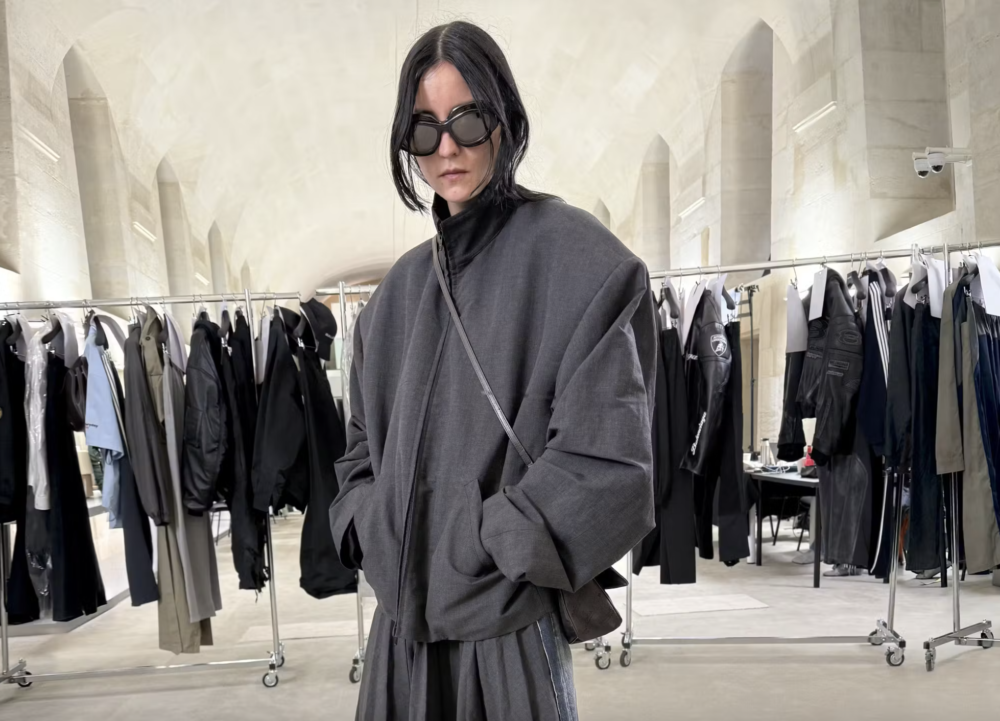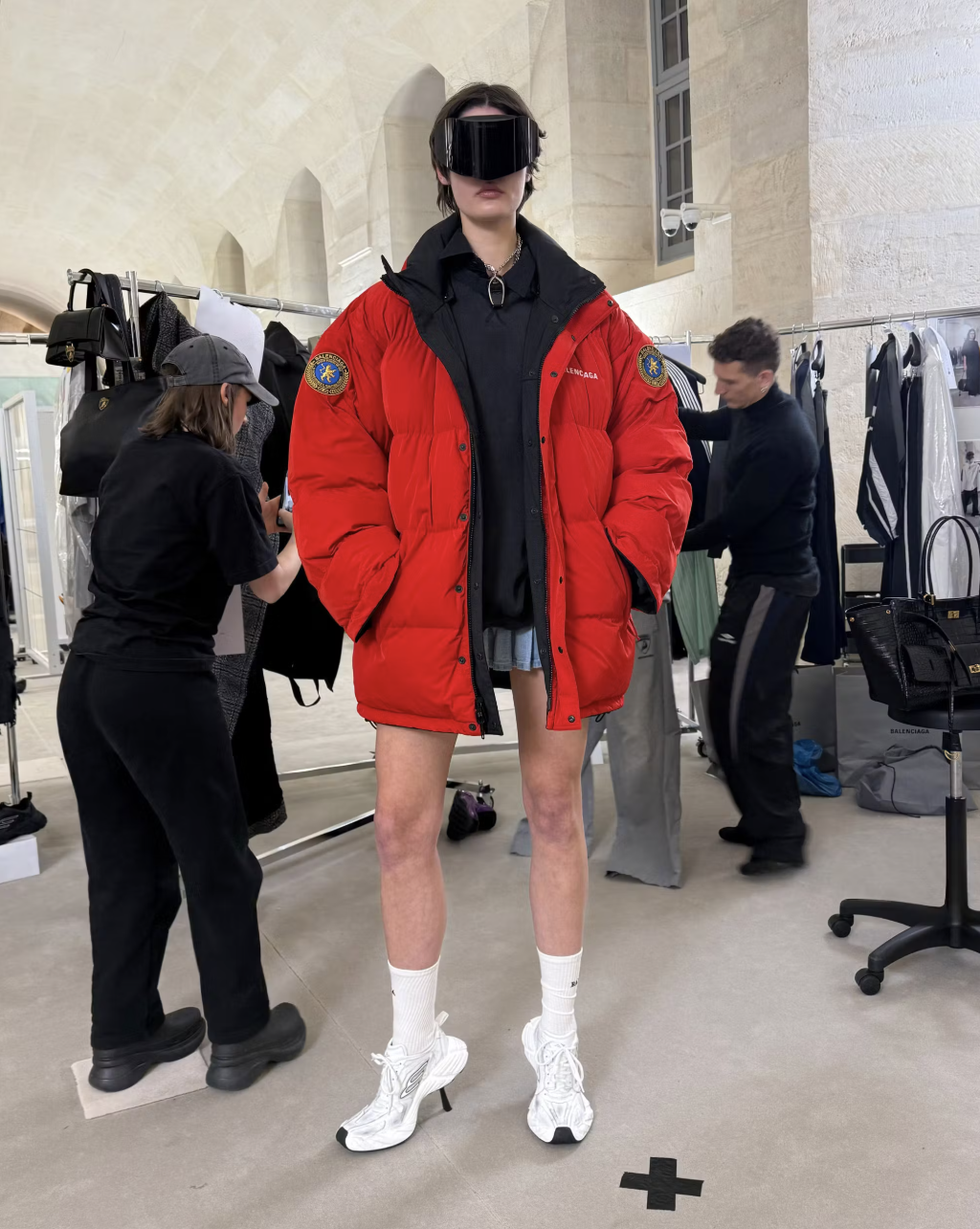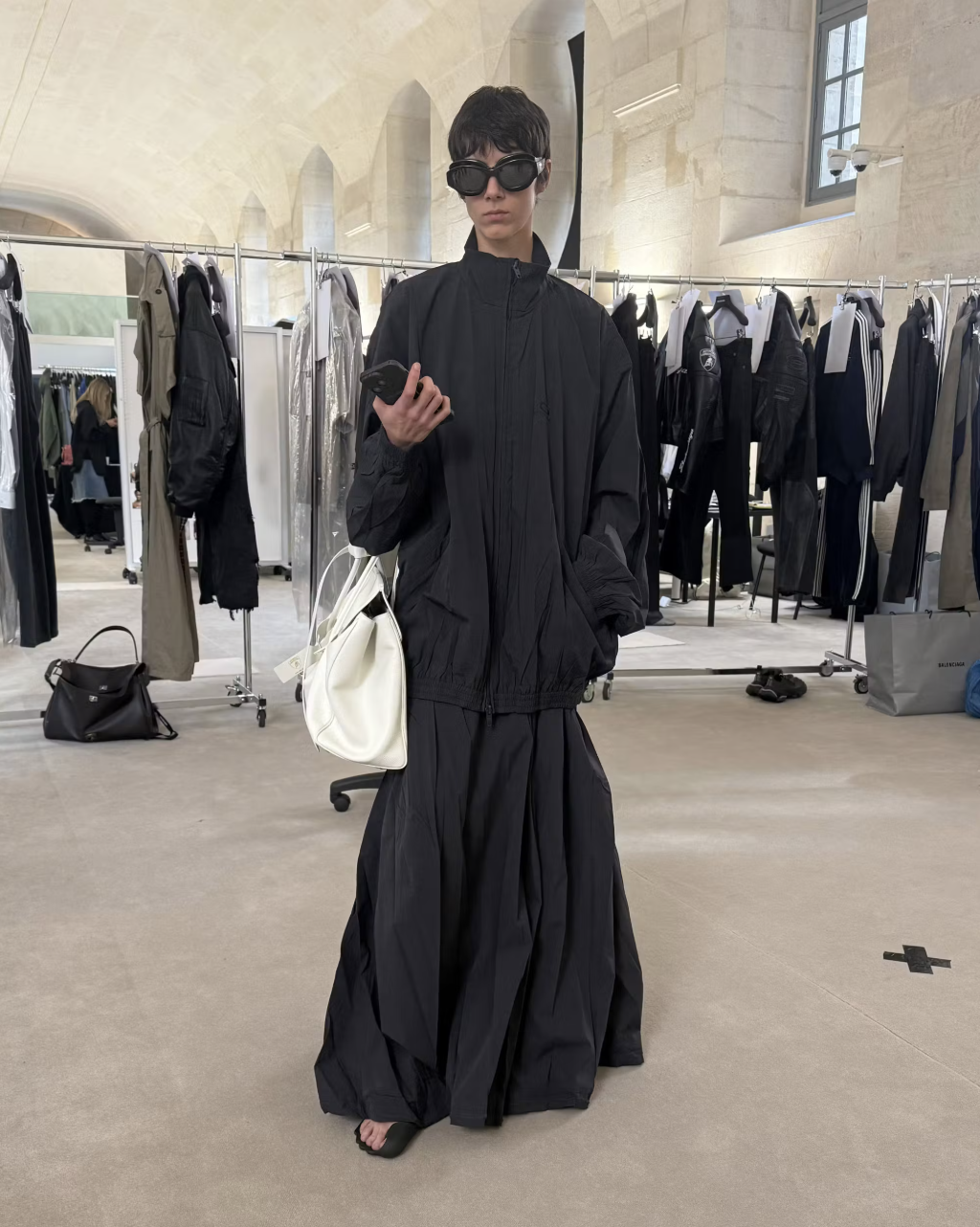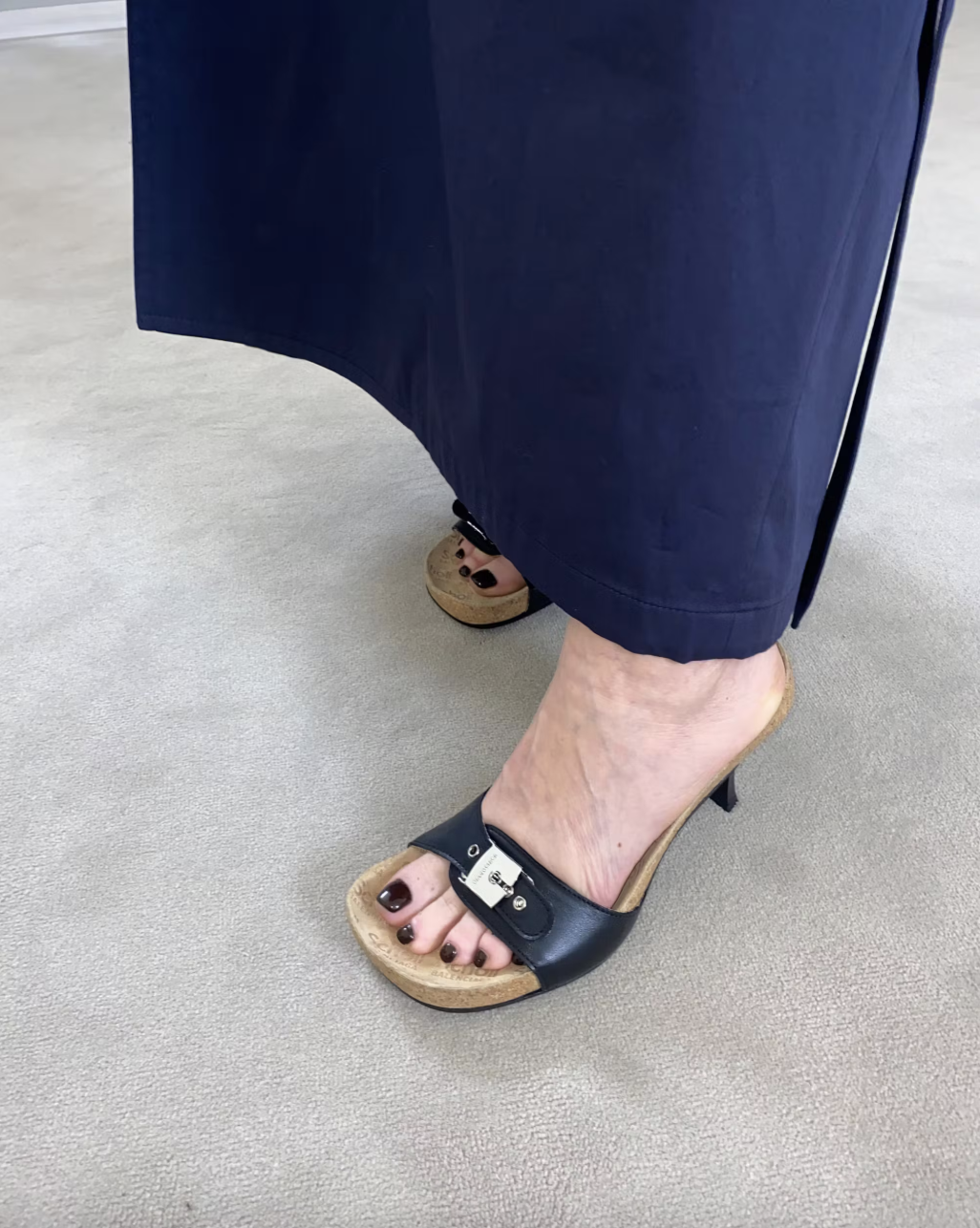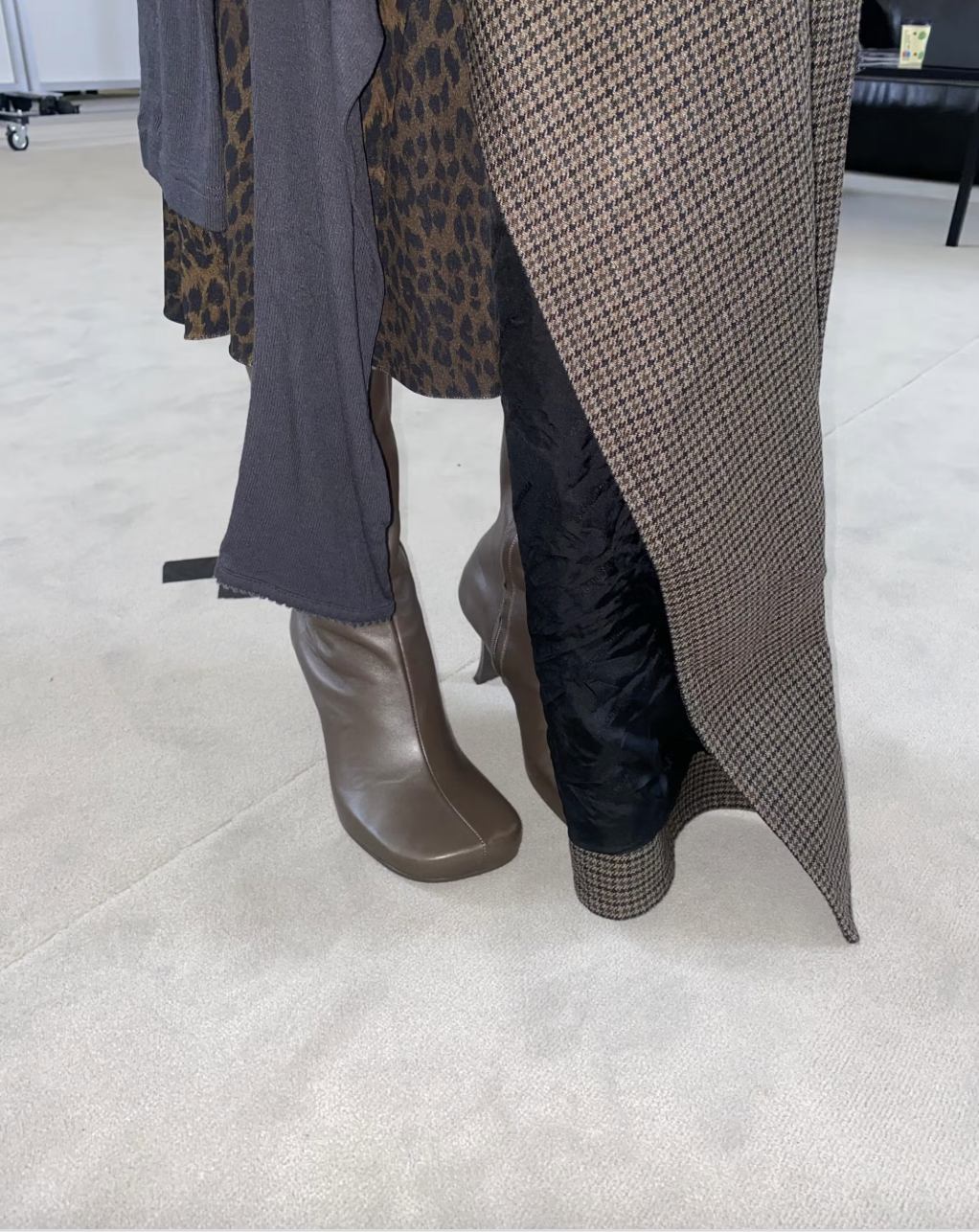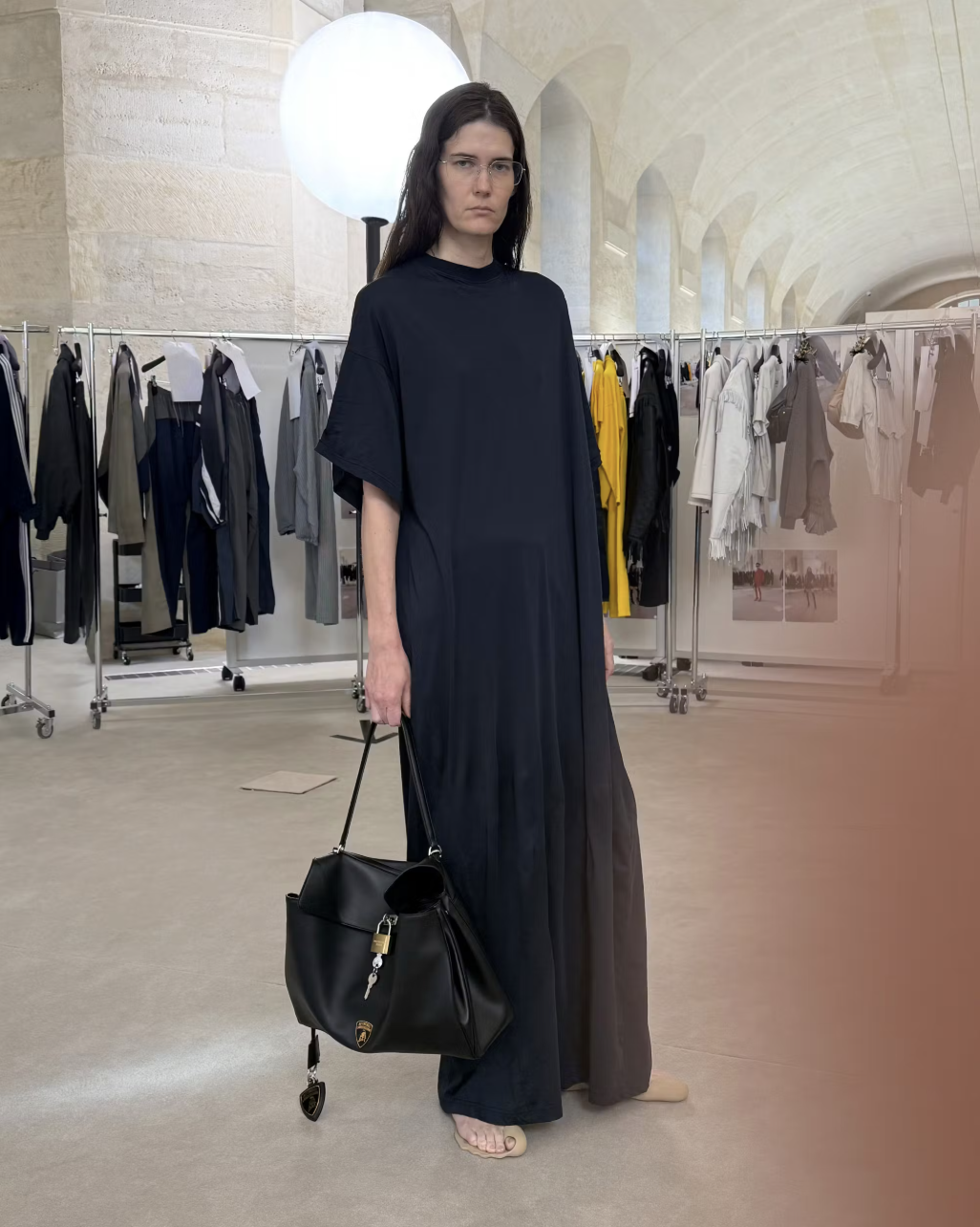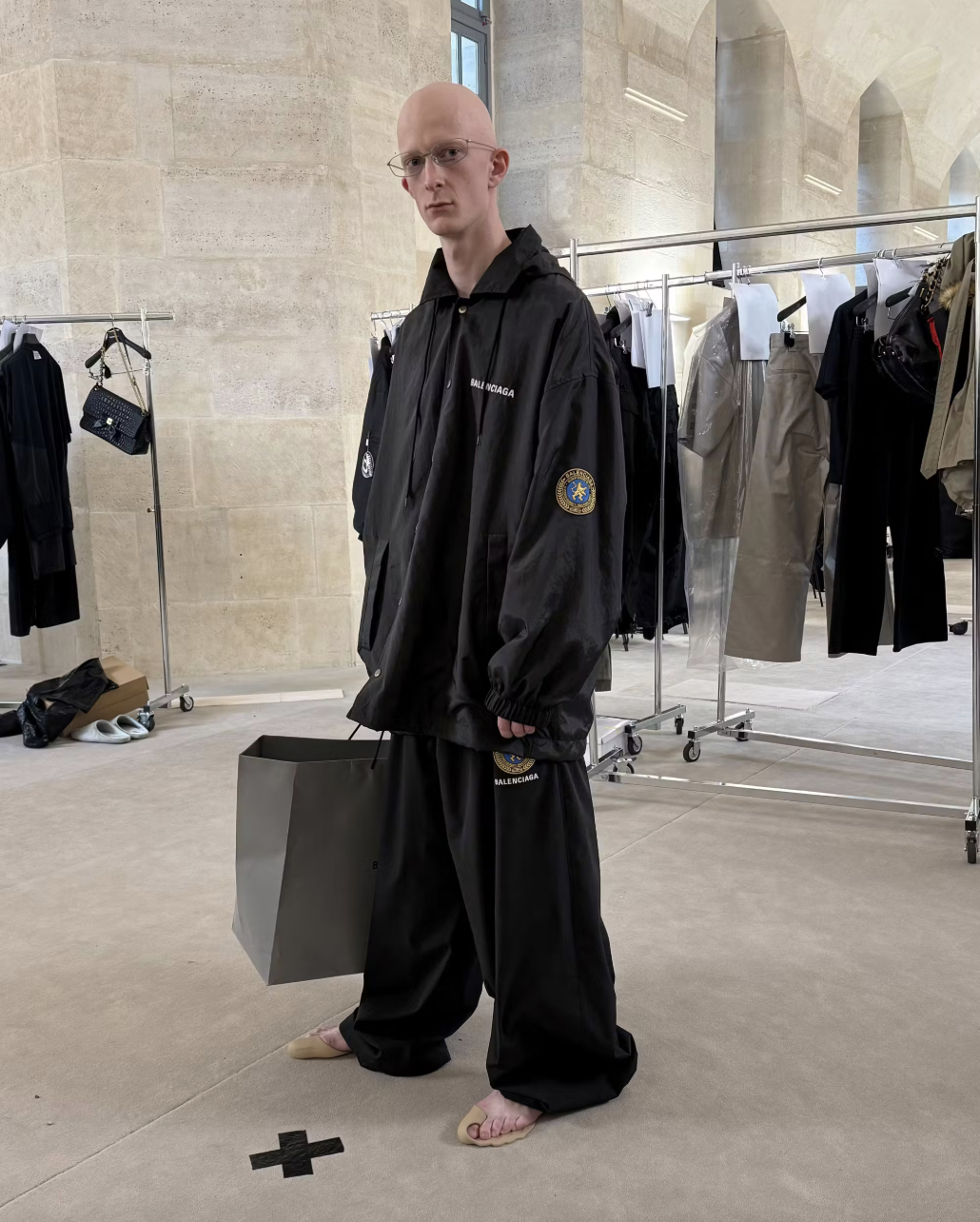Balenciaga’s Pre-Fall 2025 campaign for its Automobili Lamborghini collaboration, styled as a “leaked” series of photos from creative director Demna Gvasalia’s camera roll, at first glance feels like a casual glimpse into the creative process rather than a meticulously curated luxury campaign. With its watermarked, unpolished imagery evoking the spontaneity of a behind-the-scenes moment, the campaign disrupts expectations of high fashion’s curated and highly-produced aesthetics. At a time when under-produced visuals are beginning to dominate cultural preferences, (look no further than Loewe’s latest editorial shot by Juergen Teller), Balenciaga’s choice resonates with a growing shift in how authenticity is constructed. But is this more than a surface-level bid for relatability? Could it instead be emblematic of a deeper transformation in the way we experience and value images in contemporary culture?
The editorial images are framed as ephemeral snapshots—pictures more likely to be pulled up on a stylist’s phone during a creative meeting than showcased globally as an official collection editorial. On closer inspection, the campaign possesses an uncanny quality that compels the viewer to linger. In “Remediation: Understanding New Media,” Jay David Bolter and Richard Grusin describe this experience as hyper-mediacy—a form of aesthetics that “asks us to take pleasure in the act of mediation” and “multiplies the signs of mediation” to create a “feeling of fullness, a satiety of experience, which can be taken as reality.”
Under-produced aesthetics, or broadly, vernacular images, those images one captures without ever really returning to them, the litter of one’s camera roll which defines a certain visual diary of their life, are increasingly becoming popularized, not just in social media spaces (by way of curated-lazy photo dumps and unfiltered grainy iPhone zooms) but also by brands and luxury houses of the highest calibre like Balenciaga.What might seem like a banal or lazy artistic choice actually reflects a broader cultural shift: a paradoxical nostalgia for the present.
Pre-pandemic culture embraced hyper-mediacy through the fetishization of analogue technologies—think of Neil Krug‘s dreamy imagery, Petra Collins‘ ethereal aesthetics, and the widespread use of 35mm film in fashion and cinema. However, the rapid acceleration of nostalgia-driven trends in recent years has led to cultural flattening. Aesthetic references from the past have been so extensively mined that they’ve lost their potency. No longer does a 35mm image or Polaroid elicit the same pull to linger as it once did; the novelty of nostalgia has been eroded by overexposure, leaving these once-potent references bereft of emotional resonance.
With past aesthetic referents losing their ability to provide the “satiety of experience” we crave when engaging with images, the present moment feels increasingly ambiguous within this cultural flatness. In this paradigm, fetishizing the present becomes a transgressive act. Enter the iPhone photo—the most immediate way to capture a moment. Balenciaga’s emphasis on the banality of such images mirrors the logic of hyper-mediacy, which involves an “insistence that the viewer keep coming back to the surface or, in extreme cases, an attempt to hold the viewer at the surface indefinitely.” The editorial elicits a desire to return to the surface of the image. “Is this really the new Balenciaga editorial? It looks like it was shot on an iPhone.” Here one not only interfaces with the collection itself, but also a distinct awareness of the banality of the image. This multiplication of the signs of mediation invites viewers into sustained engagement with the editorial, ultimately providing fodder for larger cultural questions about the boundaries between the mundane and the aesthetic, the immediate and the constructed.
By re-framing images shot on an iPhone—once considered mundane or low-brow—as artifacts of a fleeting moment, Balenciaga fetishizes the immediacy of the present, serving as a form of resistance against the ambiguity of the digital age, where meaning is transient, and cultural references are rapidly exhausted. In embracing the aesthetic of the iPhone image, the campaign creates a distinct yet elusive sense of nostalgia not for the past but for the hyper-mediated now, reflecting a profound transformation in our relationship with images and authenticity in contemporary culture.

Cody Rooney is the Editor in Chief and senior contributor at liminul.
He is a PhD candidate, digital content specialist, writer, editor, multi-media artist, and photographer.

